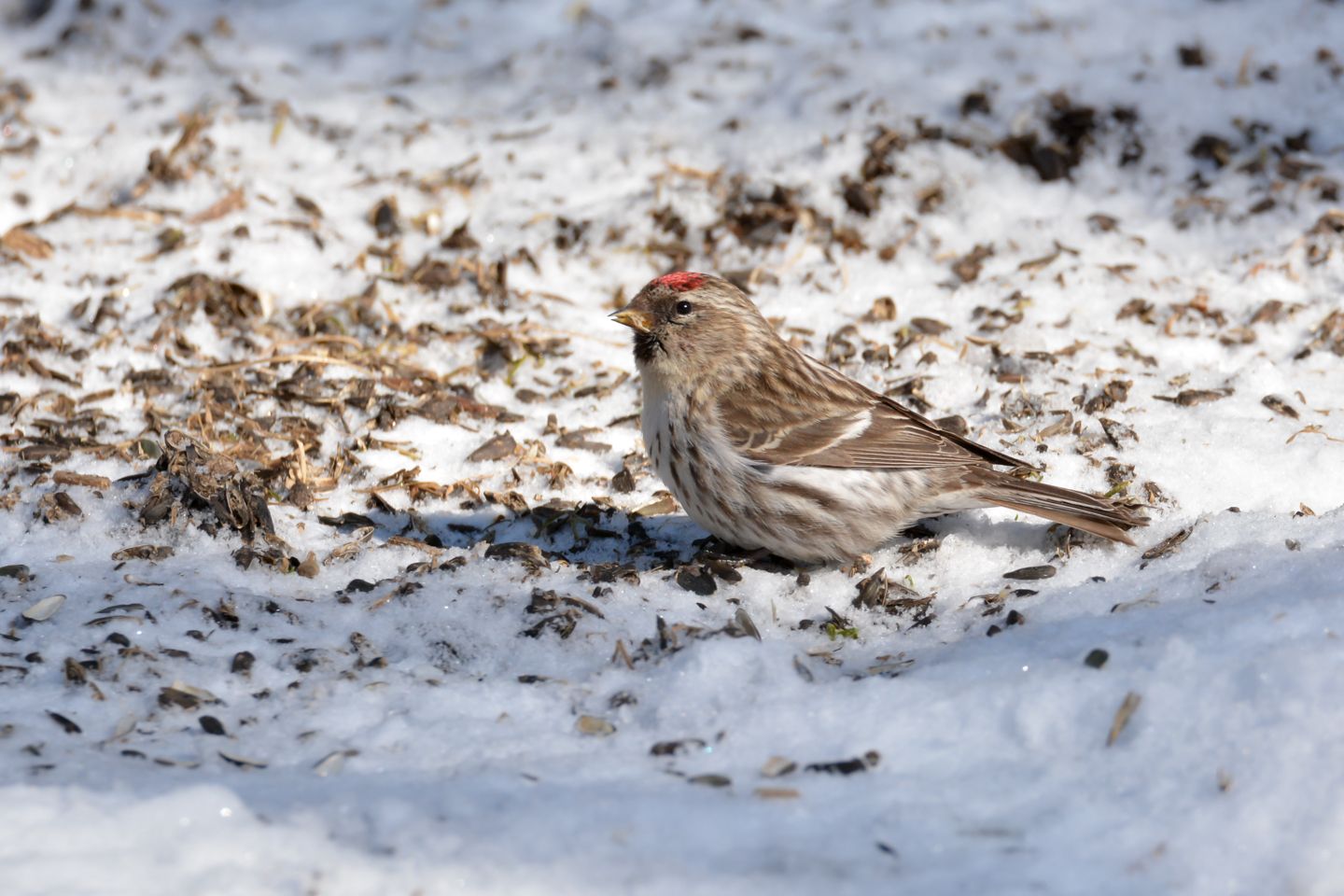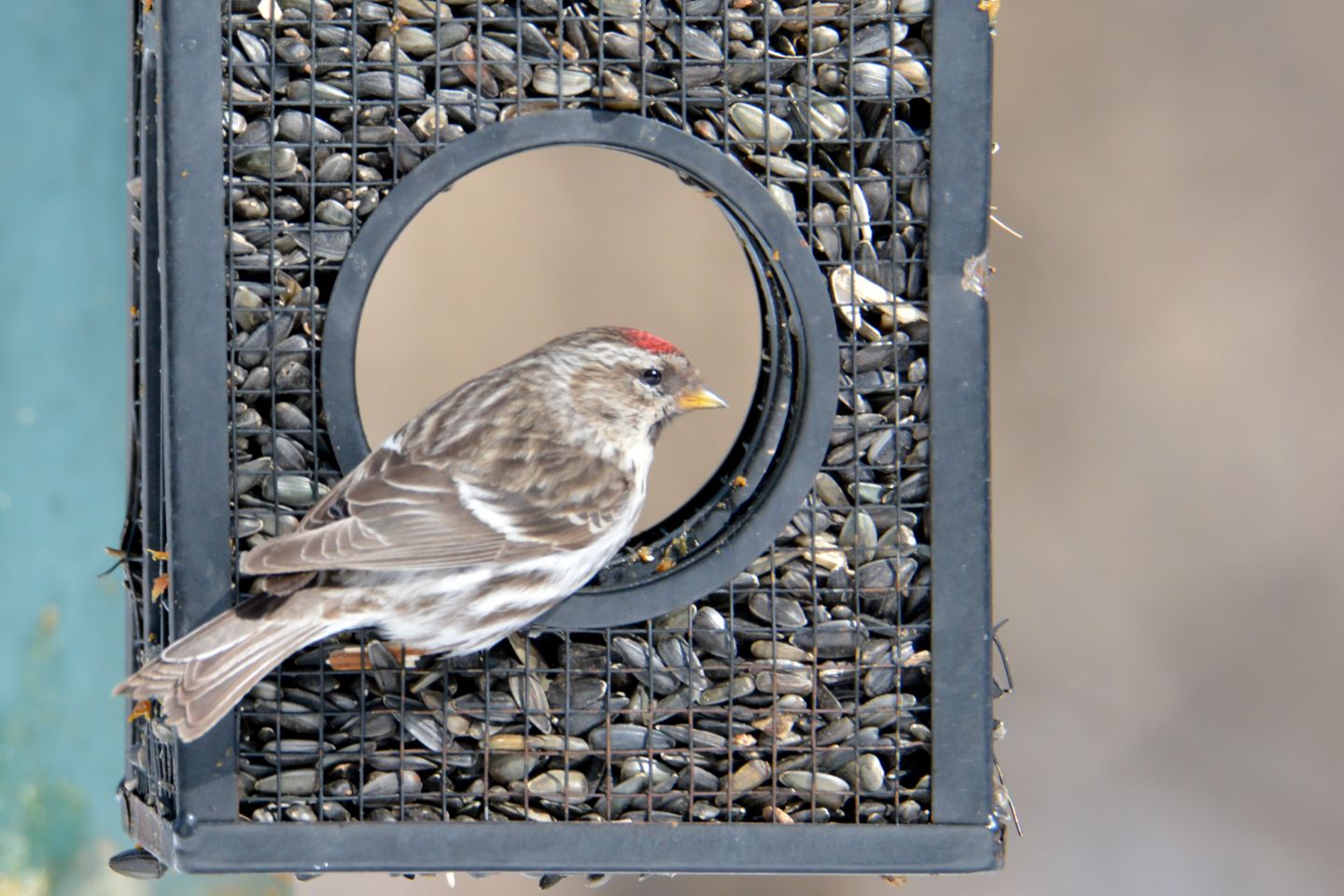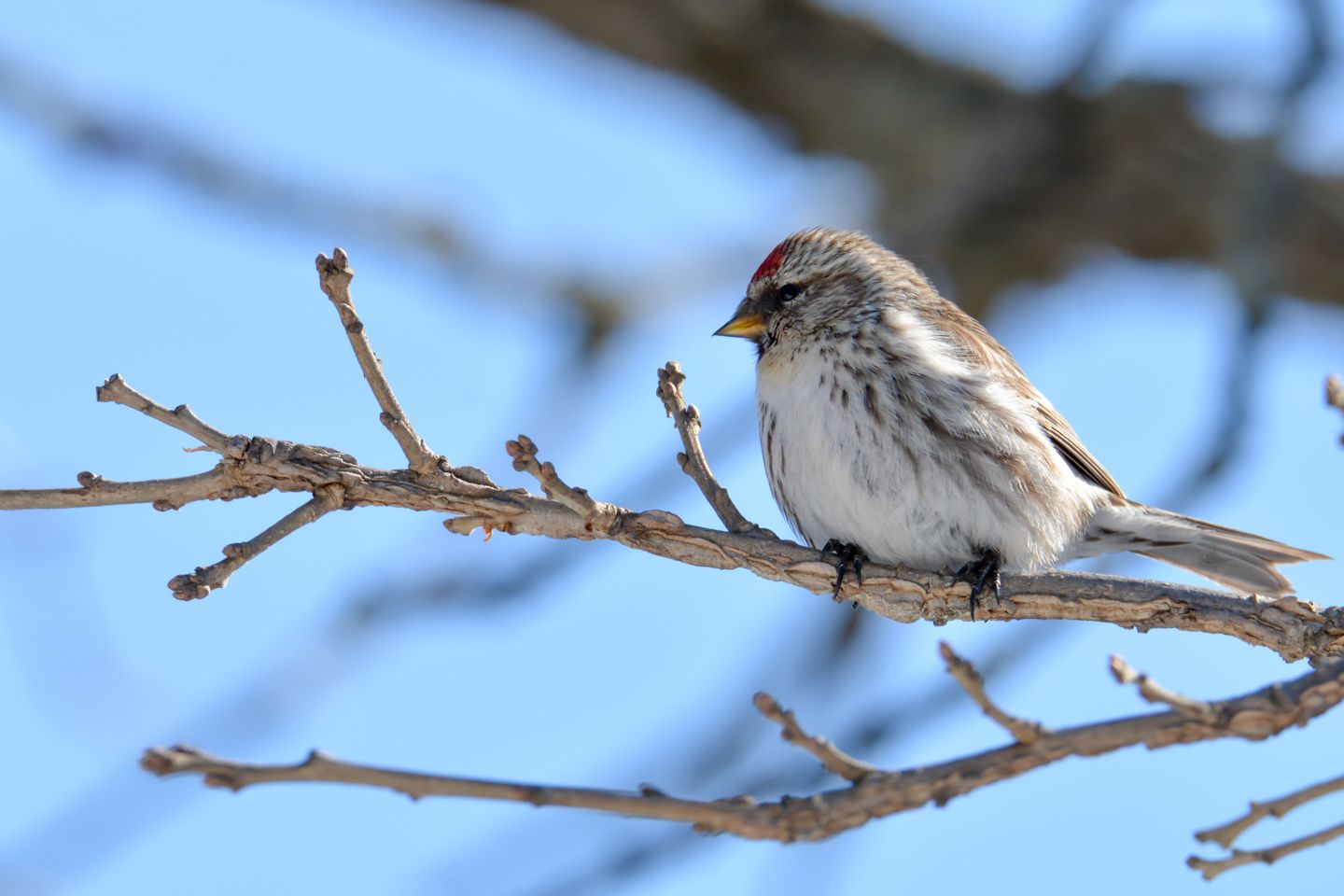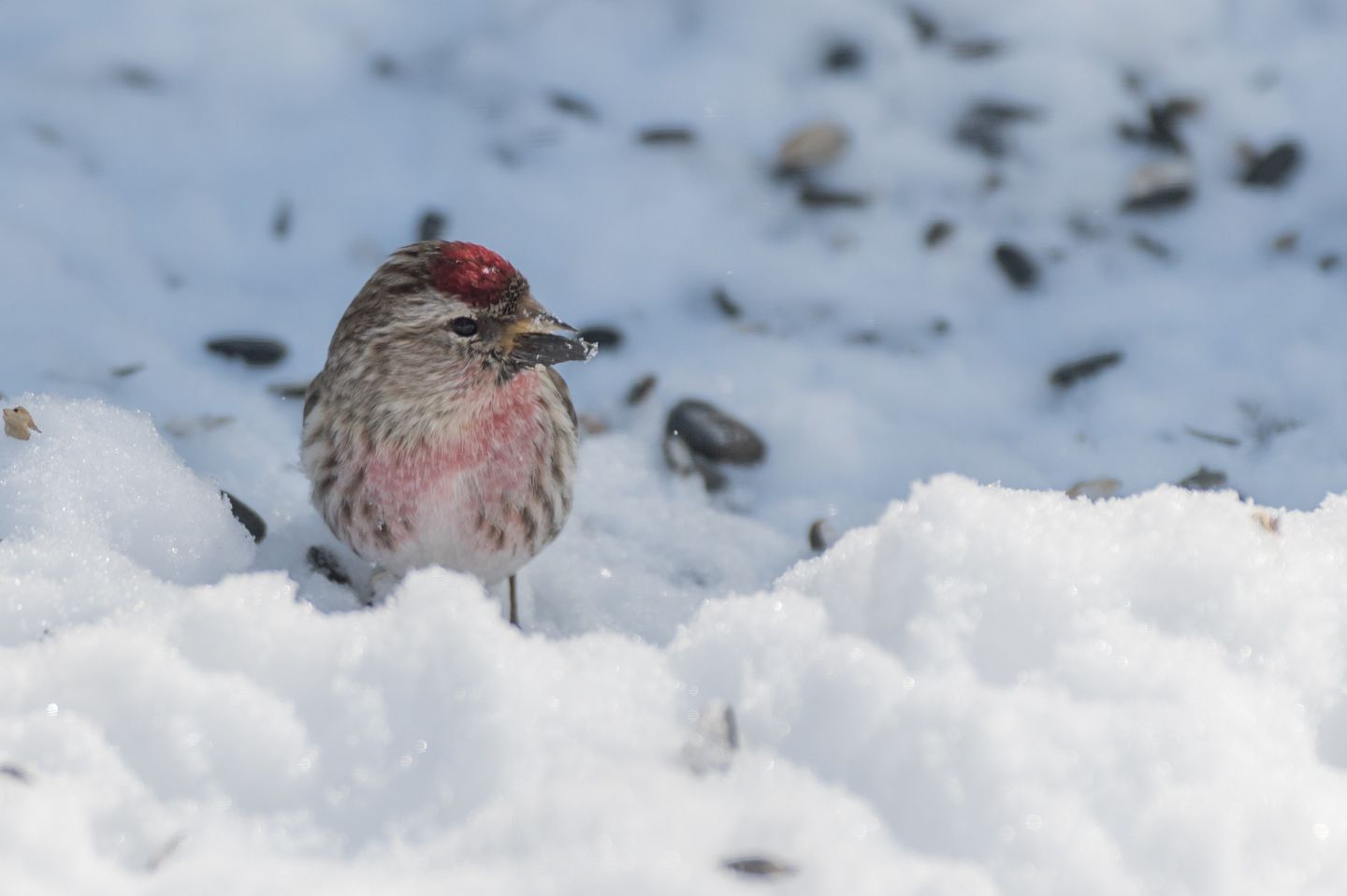Last month I mentioned this is the time of year when influxes of northern breeding birds of prey into our region may begin. While there is little evidence yet of such a movement for the winter of 2020-21, another invasion is clearly underway. Large irruptions of “winter finches” have been noted throughout most of northeastern North America as far south as the mid-Atlantic states. In our region Pine Siskin, Evening Grosbeak, and species of the redpoll complex are already appearing in small numbers. In the Adirondacks and nearby southern Canada, both species of crossbills and Pine Grosbeak are arriving. The first three visitors regularly come to bird feeders while the last three must be sought out in the field.

The overall causes of these invasions are similar to those for other northern birds. Good breeding conditions result in high reproductive success that leads to increased population levels. Thereafter food shortages occur, and these birds must emigrate or starve, so they move south in search of adequate food resources to survive the winter. They then lead a nomadic life, moving from feeding area to feeding area. An abundant predictable food source, such as a well-stocked feeder, may interrupt their wandering for days or weeks. While each species ecology is different and their irruption patterns vary, all are seed and small fruit eaters. This wonderful group of winter visitors to our region is too interesting for a single article to cover. This month I will concentrate on one species complex of visitors with other groups saved for coming articles
The Common Redpoll is a small Arctic finch that nests in the Boreal Forest and Tundra Regions of both the old and new worlds. Along with its close cousin, the Hoary Redpoll, these birds form a taxonomic complex currently driving serious birders and academic ornithologists to distraction. Recent DNA analysis suggests that what we now think of as two species may comprise as many as five or six. Since redpolls have highly variable plumage by age and sex, sorting them out is already a daunting task. Those observers wishing not to risk precious sanity are probably best to consider all redpolls in flocks as the same species. We can enjoy these entertaining little finches when they descend on our feeders and not be at all concerned with their family tree.

Common Redpolls are true northerners with their breeding range in North America extending across the top of the continent from Newfoundland and the Canadian Arctic to Alaska. In the old world, the range extends from Greenland and Norway to Siberia. Thus this range circles the pole (circumpolar). During years when their primary food of small seeds is abundant, they may remain all year within the primary breeding range. In other years, usually every second or third year, food supplies fail, and this species irrupts south, often in great numbers. During these irruptions, when and where flocks appear is highly variable and nomadic in nature. Driven by food availability and abundance, flocks may appear in their southern range as early as mid-November or as late as February.
The usual southern extent of these flights in North America ranges from New Jersey to Idaho, primarily east of the Rockies. As with the southbound trip, the northbound return usually varies from mid-February to mid-April. This species migrates in numbers during daylight hours, unlike many small birds. At the Derby Hill Bird Observatory of the Onondaga Audubon Society, near the southeastern corner of Lake Ontario, large spring flights of up to five thousand a day have been observed.
Once these flocks appear, they are hard to miss as they whirl through weedy old fields dining on seeds, or over-running bird feeders. If one feeds Niger seed during big redpoll invasions it may require taking out a second mortgage to keep your guests well fed. Such invasions are wonderful opportunities to enjoy these sprites of the North close up and personal at your feeders.
It’s clear that before irruptions into our area are possible, the population levels must exceed available local food resources and definitely, successful breeding plays an important part in the process. Breeding occurs in Tundra and open forested areas, with birds avoiding dense closed forest.

The female does most of the chores of raising young, from nest building to nest sanitation and feeding the brood. Usually, four to six eggs are laid and hatch in about eleven days. The young are ready to leave the nest after another eleven days and are soon on their own. Unlike young hawks and fish-eating species these young usually have readily available food sources since catching seeds is not that hard. Usually, only one brood is raised per year, but successful parents may try a second nesting in good years. The short summer at high latitudes, weather, predation, and food resources are the primary constraints on nesting success. The usual vegetarian diet of this species is supplemented with small arthropods and insects, particularly while feeding nestlings.
When irruptions occur they include a large percentage of female plumaged birds, presumably including many birds of the year. The salmon pink-breasted adult males often make up 10-15 % or less of a given flock and in some invasions can be quite uncommon.
Flocks have a distinct pecking order when observed at feeders, and based on my observations, adult males are often at the top of that order. Irruptions provide an opportunity to enjoy this northern visitor, so when one occurs, stock up the Niger seed.

The Indian River Lakes region to the St. Lawrence River is a good corridor for all irruptive finches during flight years. So with this invasion coming, now is the time to process the bank loan for adequate Niger seed and feeders. Also, be sure to get lots of Black Oil Sunflower seed, as while redpolls prefer Niger, they will happily eat black oil sunflower. If you add cracked corn to your feeding regime, most winter bird species will be happy. Avoid seed mixes containing large amounts of millet as much of that material is a waste of money.
Fortunately, this abundant little finch is not currently of conservation concern. It is likely these spirited sprites will continue to entertain future generations for some time to come. However, lurking in the background is the specter of climate change that could devastate many northern species. For the moment, enjoy, try to reduce your carbon footprint, and stay tuned.
By Gerry Smith with photographs by Julie Covey
Sherri Leigh is a senior Ornithologist, Avian Ecologist and Conservationist, working to preserve bird populations in Northern New York State.
Julie Covey, Nature in NNY (https:www.facebook.com/NatureinNNY/)
Posted in: Volume 15, Issue 12, December 2020, Nature
Please click here if you are unable to post your comment.
